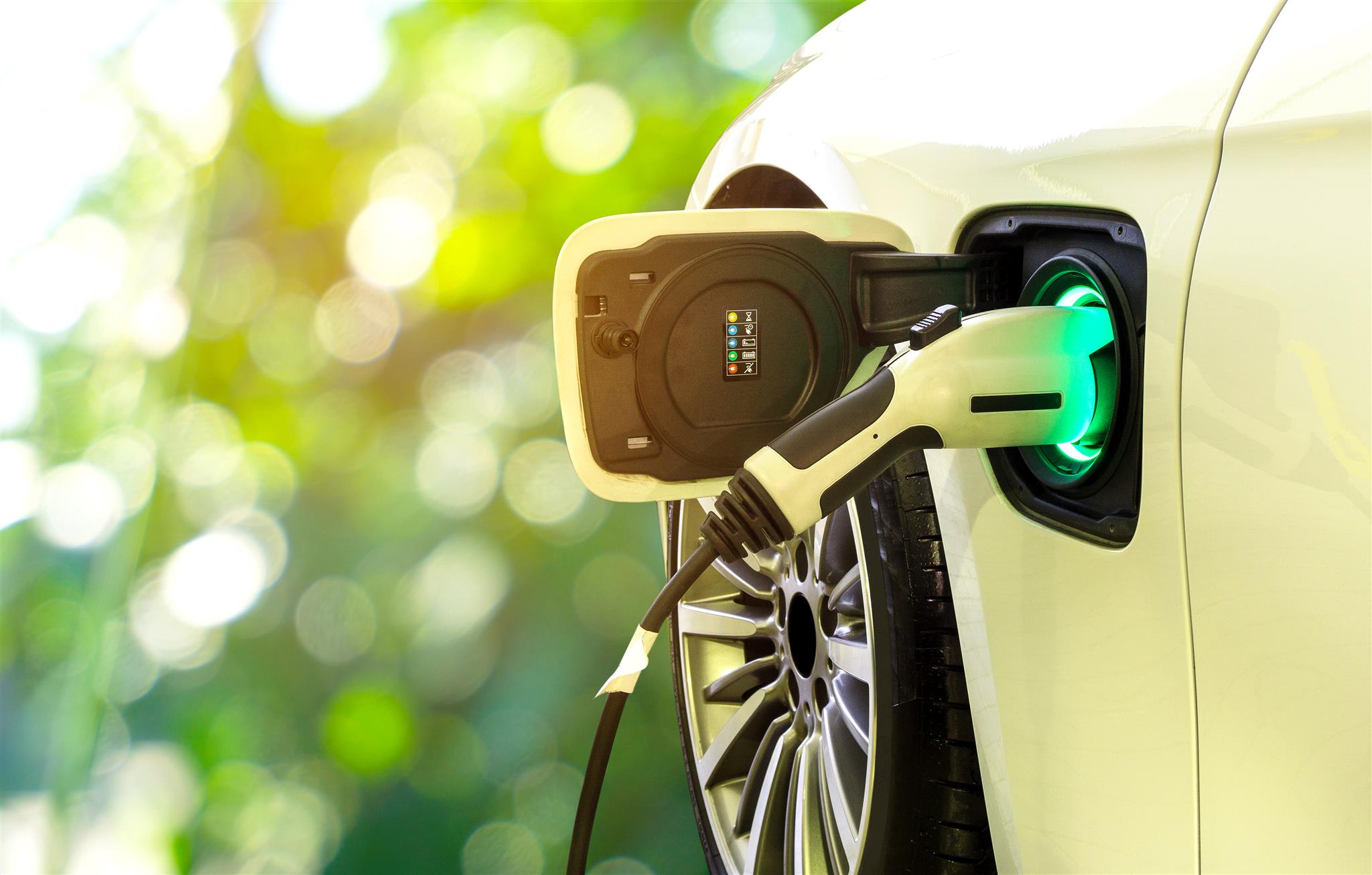
With the nation’s network of public electric vehicle charging facilities still relatively thin, most EV owners charge their rides at home. This can be as easy to accomplish as plugging the car into a wall outlet or as complex as having solar panels installed to replenish an EV’s battery.
All EVs come with a means to be connected to the power grid. Technically speaking, the charging station that converts AC house current into DC electricity is built into the vehicle. Most models include a basic 110-volt charging unit that plugs into a standard electric outlet via a conventional three-prong plug.
This is called Level 1 charging, and assuming you already have basic electric service in your garage, it’s the cheapest way to go. Unfortunately, it’s also the slowest. Depending on the vehicle and its battery capacity, it can take anywhere from eight to nearly 24 hours to bring its power cells up to a full charge.
A better choice is to spend a few hundred dollars to have an electrician install a dedicated 240-volt circuit – like those used for an electric clothes dryer – to take advantage of what’s called Level 2 charging. This can replenish a depleted battery in around four hours. You’ll also need to purchase an external Level 2 charging unit, which is also called the electric vehicle service equipment (EVSE).
Level 2 charging systems come in two basic varieties, plug-in portable and wall-mounted units that are hard-wired directly to a home’s electric service. If you don’t have a closed garage and you’ll be charging the vehicle outside, local codes may require a fixed-mount unit. Otherwise a portable charger requires no professional installation, assuming you’ve added the 240-volt service line. This type can come in handy if you own two homes or will be staying with friends or family in another town and want to take the unit along for charging at your destination.
A good quality EVSE can cost between $300 and around $1,200. If you’re choosing a wall-mounted unit, expect to pay another several hundred dollars for installation, depending on local labor rates and permit costs.
If you’re buying an EV, make sure the power outlet or wall-mounted charging station will be located within close proximity to your vehicle’s connecting port. Charger cables usually run from around 15 to 25 feet in length, but that may not be sufficient or desirable if the car’s port is located on the opposite end of the garage from the available power source. You may have to have an electrician extend the service closer to your car’s charging port if that’s the case.
It’s possible to use solar power to charge an EV, usually via panels mounted to the garage roof, but this can cost upwards of $7,000 per installation. And that doesn't include having a storage battery installed to capture power during daylight hours for overnight charging, which could double the cost.
Solar charging becomes more cost effective, however, if you’re tapping into a full-house power system. Sources suggest a properly sized whole-house solar system can pay for itself in around seven years, depending on the size of the installation, local labor rates, component costs, and other variables. The national average for a 6-kW home solar power system is reportedly close to $19,000. Fortunately there’s a 30 percent federal tax credit with no limit available to help offset the costs. Unfortunately, the solar-power credit is scheduled to drop to 26 percent in 2020, 22 percent in 2021, and will be discontinued altogether in 2022.
Popular brands of EVSEs include ClipperCreek (one of the first companies to get into the home changing business), Siemens, JuiceBox, AeroVironment, and ChargePoint, among others. An online search can help you find a unit that comes with the features and power output that meets both your needs and budget. To make matters easier, you can purchase either of three popular ClipperCreek charging units directly from MyEV.com. Coming in both portable and hard-wired configurations, they’re priced between $379 and $565. Each of our EV for sale listings features them under a "shop for chargers" tab, or can check them out via this link.
Experts suggest buying an EVSE that can produce at least 30 amps of power. Generally speaking this type of unit would be able to add around 30 miles of operating range to a given battery pack per hour. Some EVs can get along with fewer amps, but buying more capability than you may need today makes the installation “future proof” should you eventually trade in the vehicle for a model that can handle the added capacity. However, if you’re planning on using a 30-amp unit you may need to upgrade the line’s circuit breaker to one that’s rated for at least 40 amps.
As with many other types of electronic devices these days, you can buy a “smart” EV charging unit that includes Wi-Fi connectivity. While this adds cost and complexity to what’s otherwise a plug-and-play device, choosing a smart charger adds a layer of convenience. These units allow an owner to use his or her smartphone to monitor charging, and how much energy the vehicle is using to help gauge running costs. Some smart chargers can communicate with your power company to only charge at off-peak times for discounted rates, and even receive commands via Amazon’s Alexa virtual assistant.
Finally, only consider charging units that have been tested and certified for safety by an independent source like Underwriters Laboratory (UL). And if you’re having a charger installed outdoors, make sure it’s rated for that purpose.
ABOUT THIS ARTICLE:
Change Your Location
Weekly graph
FREE ONLINE APPRAISAL